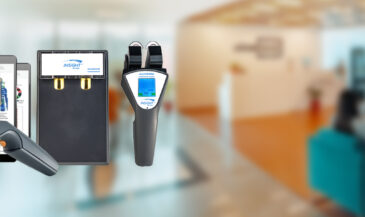I’ll be honest. I don’t love looking at the calendar and seeing that Back to School time is fast approaching. Knowing that the seasons are changing is stressful enough but the thought of organizing kids’ agendas, getting them prepped for the school year and the general anxiety of them starting in new classrooms or schools is a lot!
Stress has a way of making itself known.
The trouble is that subtle, daily stress can accumulate over time without us feeling or knowing it’s leaving a stain on our nervous systems. Stress comes at us in 3 ways: physical, emotional and biochemical. To the brain and the nervous system, stress is stress. They don’t judge where stress comes from. They just react to protect and preserve you! Stress triggers a response that causes the body to react, adapt and compensate. But all stress is not bad! A well-adjusted nervous system loves good stress because that kind of “happy” stress” helps us build resiliency. Sadly, most of us attach an emotional tag to daily stress which can convert “happy stress” into distress and that nasty stress triggers a prolonged effect that alters how we feel, communicate, move and think.
The beginning of the school year is full of stress for kids. New and heavier backpacks add to the physical stress while emotionally they can be anxious about the new school year! It sounds like the making of a horror story but it’s not. The reality is that kids and parents are programmed to adapt and see the happiness in positive change.
Wouldn’t it be amazing if a neurological roadmap and nervous system report card could be used to highlight where built up stress and has the potential to interfere with:
-
growth
-
neurological development
-
mental health
-
physical maturity
-
performance
-
and most importantly happiness?
What does a neurological roadmap and nervous system report card look like?
Neurology is very much like an intelligent information highway. It delivers critical information and never stops learning. We can track its performance and determine when it is over or under reacting and even compensating. By using scanning sensors that are tuned precisely to the neurological frequencies, we can map out where the signals are flowing as planned and where they are being interrupted. We can use these noninvasive sensors to track the performance of the nervous system, from the spine to the brain, and measure the overall adaptability. We can even score all those results and give a report card on how the system is performing. Sounds like science fiction or futuristic techno-dreaming. It’s not. CLA designed a suite of three dedicated sensors to measure the activity in the motor (postural) nervous system, the regulatory organ and gland control system and the overall adaptive Autonomic Nervous System. It’s called the INSiGHT neuroTECH and thousands of qualified chiropractors use this system millions of times yearly to measure the tone in their patients’ nervous system. It’s become a cultural phenomenon within the profession and now it is THE topic of discussion within neurodevelopmental parent groups.
So, as Back to School timing comes to the forefront and stress is building in students and parents alike, I’d love for you to be the messenger of the new truth and the deliverer of new hopeful ways in which your community moves towards proactive health decisions. Consider the confidence and edge that today’s precision technologies give you in discussing and managing day to day stress and then consider how neurological road maps and reports could make all the difference in your practice.
Ready to implement INSiGHT scanning into your practice for back-to-school? Chat with our team to get started today, or click here to take our Practice Blocker Quiz to find out if scanning is right for you.





























































































